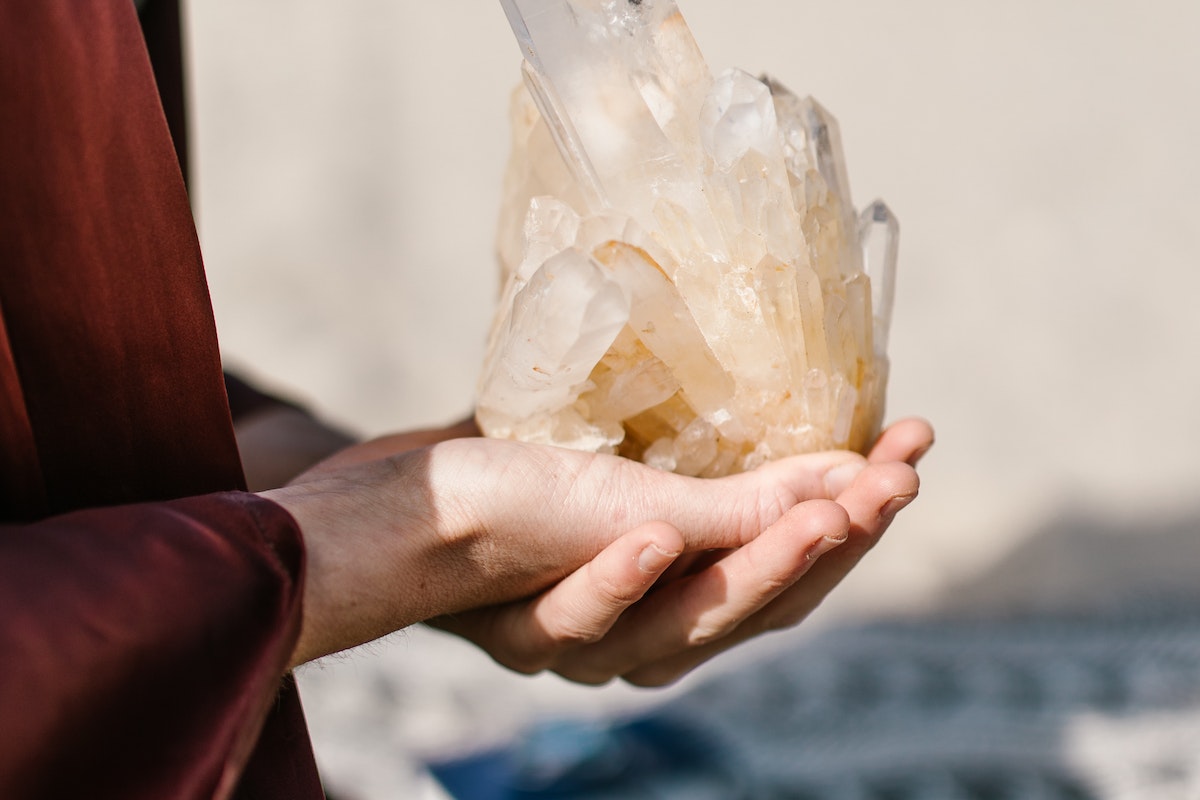If you’re in the market for a new piece of jewelry, you may have come across moissanite as an alternative to diamonds.
Moissanite is a lab-created gemstone that is often marketed as a more affordable and ethical option to diamonds but, does moissanite have inclusions?
Inclusions are natural imperfections that occur within a gemstone.
They can be caused by a variety of factors, such as minerals or gases that were present when the gemstone was forming.
Inclusions can affect a gemstone’s appearance and value, but the impact varies depending on the size and location of the inclusion.
So, does moissanite have inclusions?
The answer is yes, but the size and location of the inclusions may not necessarily impact the quality or appearance of the stone.
Table of Contents
ToggleUnderstanding Moissanite
If you’re considering buying a moissanite gemstone, you might be wondering if it has inclusions.
The answer is yes, moissanites do have inclusions, but they are typically much smaller than those found in diamonds.
Inclusions are natural and vary in size and location.
They are referred to as imperfections that a stone has.
Moissanite is a lab-created gemstone made of silicon carbide.
It was first discovered by Henri Moissan in 1893 in a meteorite crater in Arizona.
Since then, scientists have been able to create synthetic moissanite in a single-crystal form that is suitable for use in jewelry.
When it comes to moissanite clarity, it is graded based on the number of inclusions the stone has.
Nearly all gemstones have inclusions, but luckily for moissanite, most of its inclusions are not visible to the naked eye and require intense magnification to be seen.
In terms of appearance and value, moissanite’s inclusions usually do not affect it.
If they aren’t noticeable to the naked eye, they have little actual impact on quality or utility.
Moissanite is a popular alternative to diamonds because it is less expensive and has similar brilliance and fire.
When shopping for a moissanite gemstone, it is important to choose a high-quality one with minimal inclusions.
The clarity grade refers to the number of imperfections that a stone has.
A higher clarity grade means fewer inclusions and a cleaner appearance.
Overall, moissanite is a beautiful and affordable gemstone with minimal inclusions that do not affect its appearance or value.
Moissanite Vs Diamond
When it comes to choosing between moissanite and diamond, there are a few factors to consider.
While diamonds are the traditional choice for engagement rings and other fine jewelry, moissanite has become increasingly popular as a diamond alternative.
Here are a few things to keep in mind when comparing moissanite and diamond:
Price
One of the biggest differences between moissanite and diamond is the price.

Moissanite is generally much less expensive than diamond, making it a great choice for those on a budget.
While the price of diamond can vary widely depending on factors like carat weight, cut, and clarity, moissanite is consistently more affordable.
Appearance
While moissanite and diamond may look similar to the naked eye, there are a few key differences in their appearance.
Moissanite tends to have more fire and brilliance than diamond, meaning it reflects light differently and can appear more sparkly.
However, diamond has a higher refractive index, which means it can appear more brilliant in certain lighting conditions.
Durability
Both moissanite and diamond are very durable, but diamond is slightly harder and more resistant to scratches.
However, moissanite is still a great choice for everyday wear and can withstand normal wear and tear.
Clarity
Like diamond, moissanite can have inclusions, which are tiny imperfections within the stone.
However, moissanite is graded differently than diamond and is not subject to the same strict clarity grading standards.
This means that moissanite may have more visible inclusions than diamond, but they may not necessarily affect the overall appearance of the stone.
Weight
Moissanite and diamond are both measured in carats, but moissanite is less dense than diamond.
This means that a one-carat moissanite stone will actually be larger in size than a one-carat diamond.
Keep this in mind when comparing the size and weight of different stones.
Overall, both moissanite and diamond are great choices for fine jewelry, and the choice between the two ultimately comes down to personal preference and budget.
While diamond may be the traditional choice, moissanite offers a more affordable and equally beautiful alternative.
Does Moissanite Have Inclusions
When it comes to buying a gemstone, clarity is one of the most important factors to consider.
You want a stone that is clear and free of imperfections, but does moissanite have inclusions like diamonds do?
The answer is yes, moissanite does have inclusions, but they are generally much smaller and less noticeable than those found in diamonds.
Moissanite clarity is graded using the same scale as diamonds, ranging from flawless to included.
Flawless stones have no visible inclusions or blemishes, while included stones have visible imperfections.
The most common types of inclusions found in moissanite are foreign material, gas bubbles, needles, mineral crystals, clouds, feathers, knots, and cavities.
Moissanite inclusions can affect the stone’s clarity grade, but they don’t necessarily impact its appearance or value.
If the inclusions are too small to see with the naked eye, they won’t affect the stone’s beauty or brilliance.
In fact, some people prefer stones with inclusions because they give the stone character and make it unique.
When shopping for moissanite, it’s important to choose a stone with a high clarity grade.
A stone with a clarity grade of VS or higher will have very small inclusions that are difficult to see even under magnification.
A stone with a clarity grade of SI1 or SI2 may have slightly larger inclusions that are visible under magnification, but they won’t be noticeable to the naked eye.
In conclusion, moissanite does have inclusions, but they are generally smaller and less noticeable than those found in diamonds.
The type and size of inclusions can affect the stone’s clarity grade, but they don’t necessarily impact its appearance or value.
When shopping for moissanite, look for a stone with a high clarity grade to ensure that it is clear and free of visible imperfections.
Color And Cut Of Moissanite
When it comes to Moissanite, color and cut are important factors to consider.
Moissanite stones can come in a range of colors, from colorless to slightly yellow or gray.

The colorless stones are comparable to a D, E, or F color grade, while the slightly colorless stones are comparable to a G, H, or I color grade.
The yellow-tinted stones are comparable to a J or K color grade.
It’s important to note that Moissanite stones acquire color through the synthetic process they undergo.
These gems are created under extreme conditions, with superheated and pressurized gasses condensing to form the stone within special sealed chambers.
When it comes to cut, Moissanite is known for its brilliance and fire.
The cut of a Moissanite stone can greatly impact its overall appearance and beauty.
A well-cut Moissanite will have optimal light performance and sparkle, while a poorly cut stone may appear dull or lifeless.
Moissanite is typically cut in a similar way to diamonds, with the most popular cut being the round brilliant cut.
Other popular cuts include the cushion cut, princess cut, and oval cut.
Overall, when choosing a Moissanite stone, it’s important to consider both the color and cut to ensure that you’re getting a high-quality and beautiful gemstone.
Size And Value Of Moissanite
Moissanite comes in various sizes, ranging from small stones to larger ones.
The size of the stone is measured in millimeters, and the weight is measured in carats.
The value of moissanite is determined by its size, color, and clarity.
When it comes to size, moissanite is available in a range of sizes.
The most common sizes are between 0.5 and 1.5 carats.
However, moissanite can be found in larger sizes as well.
The larger the stone, the higher the price.
Keep in mind that the size of the stone is not the only factor that determines the price of moissanite.
Moissanite is an affordable alternative to diamonds, and its value is determined by its quality.
The value of moissanite is based on its carat weight, color, and clarity.
The higher the carat weight, the more valuable the stone.
The color of moissanite can range from colorless to yellow or green.
Colorless moissanite is the most valuable.
The clarity of moissanite is determined by the number and size of inclusions.
The fewer inclusions, the more valuable the stone.
In terms of value, moissanite is less expensive than diamonds.
A one-carat moissanite can cost around $400, while a one-carat diamond can cost thousands of dollars.
However, the value of moissanite is still significant, and it is a great option for those who want a beautiful and affordable alternative to diamonds.
Overall, the size and value of moissanite are determined by various factors, including carat weight, color, and clarity.
Moissanite is available in various sizes, and its value is based on its quality.
While moissanite is less expensive than diamonds, it is still a valuable and beautiful gemstone.
Durability And Hardness Of Moissanite
When it comes to durability and hardness, moissanite is an excellent choice for jewelry.
It is one of the hardest gemstones on the planet, with a rating of 9.25 on the Mohs scale.
This means that it is highly resistant to scratching and chipping, making it a great choice for everyday wear.
Moissanite’s durability is due to its composition.
It is made of silicon carbide, which is a very hard and durable material.
This means that it can withstand daily wear and tear, and will not easily scratch or chip.
In fact, moissanite is more scratch-resistant than other popular gemstones like sapphires, rubies, and emeralds.
Another benefit of moissanite’s durability is that it will last a lifetime with proper care.
It is important to clean and care for your moissanite jewelry just like you would with any other piece.
This includes storing it properly, avoiding harsh chemicals, and having it professionally cleaned and inspected regularly.
Overall, moissanite’s durability and hardness make it an excellent choice for everyday wear.
It is highly resistant to scratching and chipping, and will last a lifetime with proper care.
If you are looking for a durable and long-lasting gemstone for your jewelry, moissanite is a great option to consider.
Optical Properties Of Moissanite
Moissanite has a unique optical property that sets it apart from other gemstones.
It has a high refractive index of 2.65, which is higher than that of a diamond.

This means that moissanite reflects light better than a diamond, giving it superior sparkle and brilliance.
The high dispersion of moissanite also contributes to its unique optical properties.
Dispersion is the ability of a gemstone to separate white light into its spectral colors.
Moissanite has a dispersion of 0.104, which is higher than that of a diamond.
This means that moissanite displays more fire than a diamond, with more colorful flashes of light.
Moissanite’s optical properties are what make it a popular alternative to diamond.
It has a similar appearance to a diamond, but with more sparkle and fire.
Moissanite is also more affordable than a diamond, making it an attractive option for those looking for a high-quality gemstone without breaking the bank.
In terms of clarity, moissanite can have inclusions like any other gemstone.
However, the presence of inclusions does not necessarily detract from the beauty of the stone.
Inclusions can be natural and vary in size and location, but if they are not noticeable to the naked eye, they have little impact on the quality or utility of the stone.
Overall, moissanite’s unique optical properties make it a stunning alternative to diamond.
Its high refractive index and dispersion give it superior sparkle and fire, and its affordability makes it an attractive option for those looking for a high-quality gemstone.
Moissanite In Jewelry
Moissanite is a popular choice for jewelry, especially for engagement rings.
It is a beautiful gemstone that looks similar to a diamond but is more affordable.
Moissanite is available in different shapes and sizes, making it versatile for use in various jewelry designs.
When it comes to engagement rings, moissanite is an excellent choice.
It is durable and can withstand everyday wear and tear.
Plus, it has a high refractive index, which means that it sparkles more than a diamond.
Moissanite engagement rings come in a variety of styles, from classic solitaires to more elaborate designs with side stones.
Moissanite is also a great choice for other types of jewelry, such as earrings, necklaces, and bracelets.
Its versatility allows it to be used in many different designs, from simple and elegant to bold and modern.
It is also a popular choice for vintage-inspired jewelry.
One of the benefits of moissanite is that it is available in many different shapes.
Round is the most popular shape for engagement rings, but moissanite is also available in princess, cushion, oval, pear, and emerald shapes.
This makes it easy to find a moissanite gemstone that will fit your personal style and preferences.
In conclusion, moissanite is an excellent choice for jewelry, especially for engagement rings.
It is durable, affordable, and versatile, making it a popular alternative to diamonds.
With its high refractive index and availability in different shapes, moissanite can add sparkle and beauty to any jewelry design.
Ethical And Environmental Impact
Moissanite is a great alternative to diamonds, not only because of its beauty but also because of its ethical and environmental impact.
Unlike diamonds, which are often mined in conflict zones and contribute to environmental destruction, moissanite is a lab-grown mineral made up of silicon carbide.
By choosing moissanite over diamonds, you can help offset the harmful effects of diamond mining on the environment and human rights.
Moissanite is a more sustainable and ethical option that is becoming increasingly popular among environmentally conscious consumers.
In addition to its ethical benefits, moissanite also has a lower carbon footprint than diamonds.
The production of diamonds involves extensive mining, transportation, and processing, all of which require significant amounts of energy and resources.
Moissanite, on the other hand, is created in a laboratory using a relatively small amount of energy and resources.

Furthermore, moissanite is a durable gemstone that can last a lifetime, making it a more sustainable and eco-friendly choice than other gemstones that may need to be replaced more frequently.
Overall, choosing moissanite over diamonds can have a positive impact on both the environment and human rights.
By making an ethical and environmentally friendly choice, you can enjoy the beauty of a stunning gemstone while also doing your part to protect the planet.
Caring For Moissanite
Moissanite is a durable and beautiful gemstone that can last a lifetime with proper care.
Here are some tips to help you keep your moissanite looking its best:
Daily Wear
Moissanite is a hard and durable gemstone that can withstand daily wear.
However, it is still important to take care when wearing your moissanite jewelry.
Avoid wearing your jewelry when doing activities that could cause damage, such as sports or heavy lifting.
It is also a good idea to remove your jewelry before showering or swimming.
Microscope
Moissanite is a gemstone that can be viewed under a microscope.
This can be useful for identifying any blemishes or imperfections in the stone.
If you notice any blemishes or chips, it is important to take your jewelry to a professional jeweler for repair.
Harsh Chemicals
Moissanite is resistant to most chemicals, but it is still important to avoid exposing your jewelry to harsh chemicals.
This includes chemicals found in household cleaners, as well as beauty products such as hairspray and perfume.
If your jewelry does come into contact with harsh chemicals, rinse it with water and dry it with a soft cloth.
Thermal Conductivity
Moissanite has a high thermal conductivity, which means it can withstand heat.
However, it is still important to avoid exposing your jewelry to extreme temperatures.
This includes avoiding exposure to direct sunlight or leaving your jewelry in a hot car.
Chips
While moissanite is a durable gemstone, it is still possible for it to chip or break if exposed to extreme force.
If you notice any chips or cracks in your jewelry, take it to a professional jeweler for repair.
By following these simple tips, you can help ensure that your moissanite jewelry stays looking beautiful for years to come.
History And Origin Of Moissanite
If you’re wondering about the history and origin of moissanite, you’re in the right place.
Moissanite is a rare and naturally occurring mineral that was first discovered by a French chemist named Dr. Henri Moissan in 1893.

Dr. Moissan was examining rock samples from a meteor crater in Canyon Diablo, Arizona when he discovered the mineral.
He initially mistook it for diamonds, but later identified it as silicon carbide.
Moissanite is a type of crystal that is formed through covalent bonding, which is the sharing of electrons between atoms.
This type of bonding is incredibly strong, which is why moissanite is so durable and resistant to scratching and breaking.
In fact, moissanite is one of the hardest minerals in the world, second only to diamonds.
In recent years, moissanite has become a popular alternative to diamonds in engagement rings and other pieces of jewelry.
One of the leading companies in the moissanite industry is Charles & Colvard, which is known for its Forever Brilliant line of moissanite stones.
These stones are created in a laboratory using a patented process that replicates the conditions under which moissanite is formed in nature.
Overall, the history and origin of moissanite is a fascinating story that highlights the beauty and rarity of this unique mineral.
Whether you’re looking for an engagement ring or simply appreciate the beauty of gemstones, moissanite is definitely worth considering.
Key Takeaways
If you’re considering purchasing a moissanite gemstone, here are some key takeaways to keep in mind:
- Moissanite does have inclusions, but they are typically much smaller than those found in diamonds. Inclusions are natural and can vary in size and location, but if they aren’t noticeable to the naked eye, they have little actual impact on quality or utility.
- Moissanite’s clarity grading is “eye-clean,” meaning that it is free from visible inclusions or blemishes when viewed with the naked eye. However, moissanite gems may have tiny, needle-like inclusions that invariably develop during the growing process of moissanite.
- Moissanite is a durable gemstone, with a hardness rating of 9.25 on the Mohs scale, which is similar to that of diamonds. This means that moissanite is resistant to scratches and chips.
- When shopping for a moissanite gemstone, it’s important to choose a high-quality stone. Clarity grade refers to the number of imperfections that a stone has, and these are referred to as inclusions. A high-quality moissanite gemstone will have fewer inclusions, making it more valuable and visually appealing.
- Unlike diamonds, moissanite’s inclusions usually do not affect its appearance or value. In fact, moissanite can be a more affordable and ethical alternative to diamonds, while still offering a similar level of beauty and durability.
Overall, moissanite is a stunning and sustainable gemstone that can make a great addition to any jewelry collection.
By understanding the presence of inclusions in moissanite and choosing a high-quality stone, you can ensure that you’re getting the most value and beauty out of your purchase.











